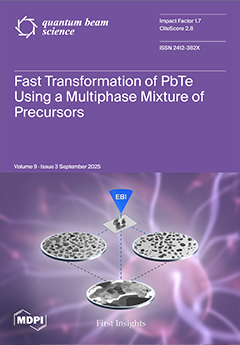Optimizing thermoelectric (TE) performance in two-dimensional materials has emerged as a pivotal strategy for sustainable energy conversion. This study systematically investigates the regulatory mechanisms of uniaxial strain (−2% to +2%), temperature (300–800 K), and out-of-plane electric fields (0–1.20 eV/Å) on the thermoelectric properties
[...] Read more.
Optimizing thermoelectric (TE) performance in two-dimensional materials has emerged as a pivotal strategy for sustainable energy conversion. This study systematically investigates the regulatory mechanisms of uniaxial strain (−2% to +2%), temperature (300–800 K), and out-of-plane electric fields (0–1.20 eV/Å) on the thermoelectric properties of monolayer MoS
2 via first-principles calculations combined with Boltzmann transport theory. Key findings reveal that uniaxial strain modulates the bandgap (1.56–1.86 eV) and carrier transport, balancing the trade-off between the Seebeck coefficient and electrical conductivity. Temperature elevation enhances carrier thermal excitation, boosting the power factor to 28 × 10
10 W·m
−1·K
−2·s
−1 for p-type behavior and 27 × 10
10 W·m
−1·K
−2·s
−1 for n-type behavior at 800 K. The breakthrough lies in the exceptional suppression of lattice thermal conductivity (
κ1) by out-of-plane electric fields—at 1.13 eV/Å,
κ1 is reduced to single-digit values (W·m
−1·K
−1), driving
ZT to ~4 for n-type MoS
2 at 300 K. This work demonstrates that synergistic engineering of strain, temperature, and electric fields effectively decouples the traditional trade-off among the Seebeck coefficient, conductivity, and thermal conductivity, providing a core optimization pathway for 2D thermoelectric materials via electric field-mediated
κ1 regulation.
Full article





